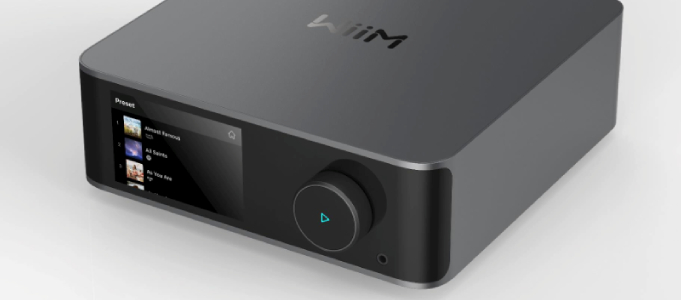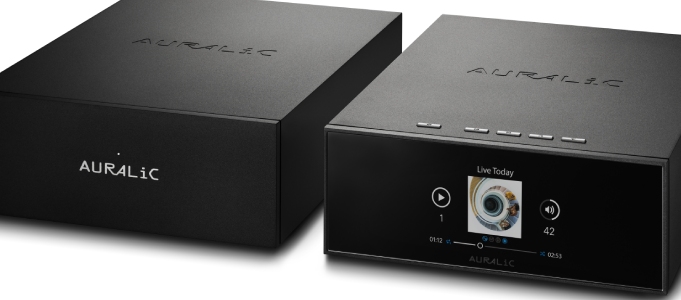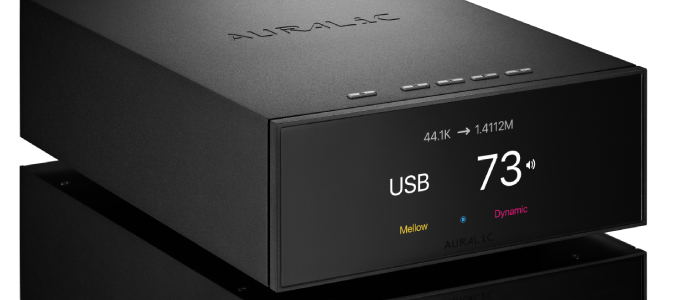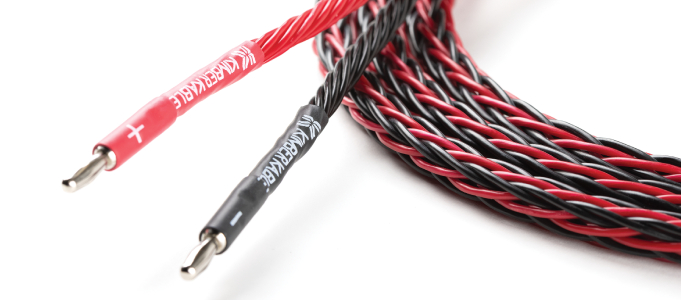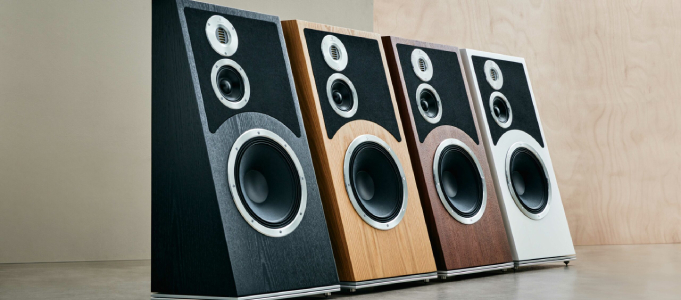MOON 250i Integrated Amplifier Review

No-frills and plenty of skills, that's Jay Garrett's verdict on this Canadian entry-level integrated amplifier…
MOON by Simaudio
250i Integrated Amplifier
£1,690

Thanks to the prevalence of mobile phones, tablets and computers, it feels like we have been programmed to expect annual updates of the devices we use. Indeed, even some areas of hi-fi's hallowed ground have contracted this iterative infection – especially where digital-to-analogue conversion takes place, for example. However, certain manufacturers have designed components so satisfactorily that they remain on their roster for a decade or more.
One such marque is Quebec-based MOON, and the unit before us is the £1,690 250i integrated amplifier – initially launched nine years ago in 2013. It may well sit at the doorway to the Canadian brand's offerings but is still very much part of the range. It has almost a decade of proven reliability and still looks reasonably fresh thanks to a typically uncluttered and chic fascia layout.
Anyone familiar with the brand will recognise the rows of silver source selector buttons, blue power LED and large volume dial with the front plate crowned by the MOON treble clef logo. You will also find a 3.5mm stereo jack input (for portable music sources) and a 6.35mm headphone port handily positioned here to save you scrabbling around the back. Meanwhile, at the rear are five line-level RCA inputs alongside RS232 and IR ports for system integration and a pair of the brand's Sim Link sockets, enabling you to power on multiple MOON components simultaneously, for instance.
Claimed output power is rated 50 watts per channel into 8 ohms, with the first five happening in Class A. This is pushed out through substantial looking binding posts to your speakers. That's not much by today's standards, so ideally, you should partner it with loudspeakers of 87dB or above sensitivity unless you have a small listening room. MOON claims a 10Hz-100kHz (+0/-3dB) frequency response with THD (20Hz-20kHz @ 1W) listed as 0.015% and 0.02% @ 50W with 0.05% intermodulation distortion. The signal-to-noise ratio is put at 101dB at full power. All very decent for an amp of this price.

There are no fancy OLED displays, network streaming or even a DAC onboard. Rather, MOON has concentrated on getting the fundamentals right, before adding the digital garnish seen on the 240i. For instance, much of its 10kg weight is due to the oversized toroidal transformer and hefty vibration-mitigating casework, which, like a cocktail dress or versatile suit, comes in smart black. This keeps it both classic and massively helps keep the price down, we are told. In addition, the amp boasts the company's own bipolar output transistors, so usually – unlike most at this price – it's not a MOSFET design.
The 250i finds itself in quite a crowded marketplace at the price; however, it did not seem outclassed when plugged into the Audiovector R 3 or R 6 Arreté floorstanders, nor my Marten Duke 2 standmounts. In fact, the unassuming Canuck pushed them along quite happily and to decent effect.
As happy as it was playing with loudspeakers with £8k+ price tags, for the purpose of the review, the MOON 250i was partnered by more price comparable fare in the shape of Triangle's great value BR08 floorstanders and JBL's retrotastic L52 Classic standmounts. Sources included MOON's own 680D streaming DAC using Roon, and a VPI Prime turntable plugged in via a YBA PH1 phono stage.
THE LISTENING
The 250i isn't flashy to look at, and that characteristic continues when you play music through it. There are no bells or whistles, no pomp nor circumstance. This is not due to a lack of pace or precision, though. Instead, merely getting the job done without exaggeration and unnecessary theatrics is the order of the day with this seemingly unflappable integrated.

Unfortunately, to those looking to be instantly wowed during a quick amplifier shoot-out, the MOON 250i could well be left standing in such an audio drag race. However, the victor may prove hard work during long listening sessions or be found to be coming up short where subtleties and dynamics are concerned – something the MOON cannot be accused of. Even though its presentation could be described as relaxed or even laid back, feed it with tracks with demanding dynamics, and you suddenly discover that this cute purring kitten has teeth and claws…
YYZ from fellow Canadians Rush via Qobuz on Roon proved excellent through the MOON integrated, as it showed great separation of the instruments along with supreme handling of rhythm. Granted, at 50W per channel, it can sometimes feel like the 250i wants to drop down a cog to find that extra push depending on the volume you require and the speakers you have it partnered with. However, keep it within its power band with some well-matched speakers, and it treats you with agility paired to a musicality that communicates without the need to shout.
Also fun was Human League's The Sound Of The Crowd sent to the amp by way of my vinyl front end. This bounced through the tall Triangles to significant effect displaying heaps of energy and drive. Any thoughts of the 250i being sluggish were soon put to bed as it started to show that you can have fun while remaining relaxed. I do believe the term is “cool”.

While it might not be as upfront as some integrated amps, such as those offered by Exposure, for example, the MOON does not undersell complex arrangements or find itself overawed. Instead, there is a quiet confidence as it goes about things. In fact, rather than stamping its mark on the music, it presents tracks unobscured, uncongested and unimpeded. Such a lack of conspicuous character might put some off, while others will love it.
Tool's Schism proved that the 250i was able to pick its way through shifting rhythmic patterns as well as illuminate changing textures within a piece of music subtly so as not to spoil the mood. Here the bass chordal work in the intro switches to picked notes, and the change of attack is clear to hear through this amp. This is matched by the changing drum patterns while the guitar backs the bass. All the while, the vocals sit nicely just in front of the band. Again, this is all deftly illustrated by the 250i.
The track then explodes, and this cool Canadian suddenly steps up and becomes enthusiastic and animated, especially when plugged into the admittedly unequally-priced Audiovector R 3 Arreté. Here was powerful bass aplenty matched by great immediacy and detail across the midband. However, it is the metronomic rhythm anchoring the piece that contrasts with the dynamism that makes this work, and the MOON seems to understand this and duly delivers.
This is because it is able to spotlight the definition and placement of those all-important leading edges while also handling harmonics, sustain and decay in a natural and unforced way. I would have enjoyed a broader and deeper acoustic window at this point. However, upon reflection, this reaction was to bring the soundstage in line with everything else the 250i was doing well.

Spinning my CD copy of Stravinsky's The Rite of Spring performed by the Junge Deutsche Philharmonie under the baton of Péter Eötvös, there was little to betray the 250i's entry-level status unless you purposely focused on the few of the MOON's shortcomings. For instance, there can be a lack of weight and physical volume in more dynamic moments. Additionally, especially in dense orchestral pieces, I would prefer more spatial separation alongside the feeling of being a few more rows forward in the auditorium. However, I dare say that you would have to add a significant amount to your budget to tick those particular boxes in any real, meaningful way.
However, turn the lights off and dial up the volume, and you are still blessed with an insightful and enjoyable listen – even through the compact and overtly retro-styled JBL L52 bookshelf speakers. While lower frequencies were ultimately somewhat curtailed by the JBL's dimensions, the MOON seemed to push all the information it could discern from the performance to a point where I really didn't feel that I was missing out on that much. This was especially so, given the system's size and overall price point. Rhythm, emotion, drive and precision were all present, delivered without fuss or fanfare.
THE VERDICT
 The MOON 250i is a quietly confident performer that ticks many boxes for those on the hunt for a purely analogue integrated amplifier. Indeed, MOON appears to have got all the basics sorted, which could be one reason why the company doesn't feel the need to be releasing new lines continually. The 250i is still proudly part of its five integrated offerings.
The MOON 250i is a quietly confident performer that ticks many boxes for those on the hunt for a purely analogue integrated amplifier. Indeed, MOON appears to have got all the basics sorted, which could be one reason why the company doesn't feel the need to be releasing new lines continually. The 250i is still proudly part of its five integrated offerings.
Although aural perfection won't be found at this price point, I dare say that you'll have to dig much deeper into your budget to buy significantly increased performance, alongside matching build quality and with this many connection options. So, if you're in the market for a sub-£2,000 integrated, I heartily recommend that you check out the MOON 250i.
Visit MOON for more information
- Renaissance Audio
Distributor
Jay Garrett
StereoNET UK’s Editor, bass player, and resident rock star! Jay’s passion for gadgets and Hi-Fi is second only to being a touring musician.
Posted in:Hi-Fi Amplifiers Integrated Amplifiers Applause Awards 2022
Tags: moon renaissance audio
JOIN IN THE DISCUSSION
Want to share your opinion or get advice from other enthusiasts? Then head into the Message Forums where thousands of other enthusiasts are communicating on a daily basis.
CLICK HERE FOR FREE MEMBERSHIP








